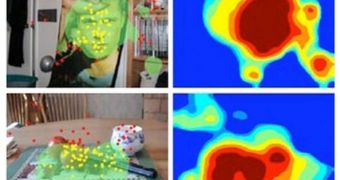A group of investigators from the Massachusetts Institute of Technology (MIT) announces the development of a new computer simulation, which they say is capable of mimicking the way in which the human brain recognizes things. The model is naturally based on visual perception, and not on hearing, smell and so on. If more thoroughly researched, the new technology could help investigators looking to improve the quality and capabilities of computer-based, object-recognition systems.
One of the most important things the science team needed to keep under advisement was the fact that the human brain processes recognition and location differently. That is to say, one region of the brain handles determining what the object is, whereas the other is trying to determine its location. The group, based at the MIT McGovern Institute for Brain Research, and led by expert Sharat Chikkerur, managed to tune their simulation in such a way that the two phenomena are handled separately by the computer program as well.
“Although what and where are processed in two separate parts of the brain, they are integrated during perception to analyze the image. The model that we have tries to explain how this information is integrated,” says Chikkerur. He was also the lead author of a new paper detailing the findings, which is published in the latest issue of the esteemed scientific journal Vision Research. The other leader of the work was the MIT Eugene McDermott professor Tomaso Poggio. He works in both the Department of Brain and Cognitive Sciences and in the Computer Science and Artificial Intelligence Laboratory.
“[The model] holds the potential for linking underlying biology to information processing in a way that’s new and exciting. We’d like to be able to link those to failures of behavior and perception, and those are naturally expressed in terms of these questions that Tommy’s raising, which is what computations are being performed,” says Salk Institute for Biological Studies (SIBS) Systems Neurobiology Laboratory (SNL) associate professor John Reynolds, who was not a part of the work.

 14 DAY TRIAL //
14 DAY TRIAL //